
by Leslie Moldenauer | | Essential Oils
Should we be using essential oils for asthma relief
Asthma is a chronic inflammatory disorder of the airways typified by wheezing, tightness in the chest, and difficulty breathing, sometimes warranting emergency medical care [1]
There has been a sharp rise in the cases of asthma over the past decade.
According to the Centers for Disease Control and Prevention (CDC):
“About one in 12 people in the U.S. has asthma, or about 25 million people. And the rate appears to be on the rise. From 2001 to 2011, the CDC says the number of Americans with asthma grew by 28 percent” [2].
Note: Sufferers know that an acute asthma attack can be a medical emergency. For this reason, use extreme caution when trying a DIY recipe at home. Never replace essential oils for your inhaler in an emergency situation. Consult your physician or go to an emergency room.
There are two main types of asthma, extrinsic is typically from external allergens, causing the production of IgE proteins, and the subsequent release of histamines causing restricted airways and the difficult breathing that follows [3].
The second is intrinsic, or having an internal cause. Dr. Francis Rackemann, an expert in asthma, stated that these individuals would not test positive for external allergens on the infamous skin prick test [3]. Intrinsic asthma could be exacerbated by a cold, flu, or other respiratory illness, for example.
Pinpointing and avoiding triggering factors can minimize asthma attacks, but those that suffer know that is not an easy task as those triggers constantly change and/or evolve. Nevertheless, if the trigger can be isolated and removed, that would be the ideal scenario.
It is always recommended to get allergy testing to determine what environmental or food allergies are present. An elimination diet can also be helpful to determine which foods the client is intolerant to as these do not always show up on an allergen skin prick test. Pollen and dust are big triggers, as are smoke, pet dander and other various chemical sensitivities such as artificial fragrance and yes, even essential oils.
There are other proposed causes of asthma attacks such as the overuse of antibiotics. The University of British Columbia found that those prescribed antibiotics before their first birthday were more than twice as likely as untreated children to develop asthma [4]. If these children had multiple courses of antibiotics, the incidences rose even higher. The theory behind this finding is excessive hygiene, reducing or removing beneficial bacteria from the gut, which causes the body and immune system to go into overdrive causing these allergic-type reactions. Read more details in the study referenced below [4].
Holistic Approach
For those that suffer from the extrinsic type, a removal of exposure to allergens is an important first step. Murray and Pizzorno state in their book, The Encyclopedia of Natural Medicine, those allergens can be viewed as straws on a camel’s back, and by adding enough straws to the camel’s back it eventually breaks [5].
*Placing quality air filters in the home is a great start. This is the one that I utilize, with great results. Here is another unit with great reviews for asthma and allergy sufferer.
*Those that have allergy-induced asthma knows that the home can be even more precarious than the outdoors. Bringing plants into the home is very beneficial. Follow this article that I wrote all about the best plants to do the job.
*Have you ever tried a pink Himalayan salt inhaler? Salt caves have been used for centuries to reduce respiratory ailments [6]. *Note, this unit is meant for salt only, do not add essential oils.
*A study published in 1996 by the Medical Journal of Australia, showed that children who ate fish (more than once a week) have one-third the asthma risk of those who did not consume it [7]. This is my preference for my children, as they will only eat moderate amounts of fish.
*Licorice (Glycyrrhiza glabra) is highly regarded as an anti-inflammatory and has antiallergenic properties [8]. Research to make sure this root is safe for your use.
*The gum resin of Frankincense (Boswellia serrata) also has antiallergenic effects. A double blind placebo study published in 1998 showed that individuals treated with the resin of Boswellia serrata showed a 70% reduction in bronchial asthma after a 6-week treatment period. The control group showed an improvement rate of only 27% [9].
Essential oils
Essential oils can also be of great benefit. The issue that I see on the Internet and social media are that the recommendations are not always based on science but on ‘sharing what worked for me’ scenarios. The problem here is an essential oil that helps one asthmatic may be the very essential oil that causes another’s attack so I do not recommend DIY’s at all to find relief. Peppermint and Eucalyptus are two such examples of what works for one is an issue for another.
Note: Always have your inhaler in hand when trying an essential oil to calm your symptoms. Steam tents have been shown to aggravate more than help, therefore, I would avoid this method of use.
On that note, I would like to share one piece of research on the subject. A study published in 2007 by the European Journal of Pharmacology, tested the constituent trans-Caryophyllene (as well as humulene) and showed that this component may help to help manage/treat inflammatory diseases such as asthma [10].
Which essential oils contain higher amounts of this constituent? Copaiba (Copaifera officinalis) and Black pepper (Piper nigrum). (Resources)
*Some of you may be having a light bulb moment. Can CBD oil help? Although CBD is not my area of expertise, I recommend reaching out to my colleague Kayla Fioravanti of Ology Essentials, who is.
Whether looking at supplements, herbs, or essential oils, I strongly advise you to continue taking medication for asthma, these things are not recommended as a replacement. Medications should never be abruptly stopped. Please reach out to your pediatrician, allergist/immunologist, or pulmonologist to discuss adding any of these recommendations to your wellness plan.


References
[1] Global Initiative for Asthma Management and Prevention (2018) https://ginasthma.org/
[2] Asthma and Allergies on the Rise in the U.S. https://www.healthline.com/health-news/children-allergies-and-asthma-on-the-rise-110813
[3] Bottrell, J. (2016) Extrinsic –vs- Intrinsic Asthma https://asthma.net/living/extrinsic-vs-intrinsic/
[4] Marra, F et al (2006) Does antibiotic exposure during infancy lead to the development of asthma?: a systematic review and metaanalysis. Chest journal https://journal.chestnet.org/article/S0012-3692(15)52261-7/fulltext
[5] Murray, M. T., & Pizzorno, J. E. (2014). The encyclopedia of natural medicine. London: Simon & Schuster.
[6] What is halotherapy? https://www.thesaltcove.com/about/#bio
[7] Salome, H. et al (1996) Consumption of oily fish and childhood asthma risk. The Medical Journal of Australia https://www.ncbi.nlm.nih.gov/pubmed/8628130
[8] Shin YW et al (2007) In vitro and in vivo antiallergic effects of Glycyrrhiza glabra and its components. Planta Medica https://www.ncbi.nlm.nih.gov/pubmed/17327992
[9] Wildfeuer, A. et al (1998) Effects of boswellic aciss extracted from a herbal medicine on the biosynthesis of leikotrines and the course of experimental autoimmune encephalomyelitis. Arzneimittel-Forschung. https://europepmc.org/abstract/med/9689425
[10] Fernandes, E et al (2007) Anti-inflammatory effects of compounds alpha-humulene and (−)-trans-caryophyllene isolated from the essential oil of Cordia verbenacea. https://www.sciencedirect.com/science/article/pii/S0014299907005419
Resources
Gertsch, J. et al (2008) Beta-caryophyllene is a dietary cannabinoid. https://www.ncbi.nlm.nih.gov/pmc/articles/PMC2449371/
Rogerio, A. (2009) Preventive and therapeutic anti‐inflammatory properties of the sesquiterpene α‐humulene in experimental airways allergic inflammation. https://bpspubs.onlinelibrary.wiley.com/doi/abs/10.1111/j.1476-5381.2009.00177.x
Like so many practices in life, I encourage you to become educated on the proper use of essential oils. When using them, please do so cautiously, understanding that there is often misinformation on the internet. You can be assured that I support only educated and proven resources. While essential oils should not be feared they should be respected and used properly to ensure the safety of the individuals using them.
Please note that I am not a medical practitioner. The content of this website is provided for general informational purposes only and is not intended as, nor should it be considered a substitute for, professional medical advice. Do not use the information on this website for diagnosing or treating any medical or health condition. If you have or suspect you have a medical problem, promptly contact your professional healthcare provider. By using this website, you assume full responsibility and liability for your own actions.
BEFORE YOU GO! Remember to sign up for my FREE Facebook group! Hang out with me and THOUSANDS of other Essential Oil lovers looking to learn, click on to join Real Essential Oil Education Group!
Check out my FREE offer below!
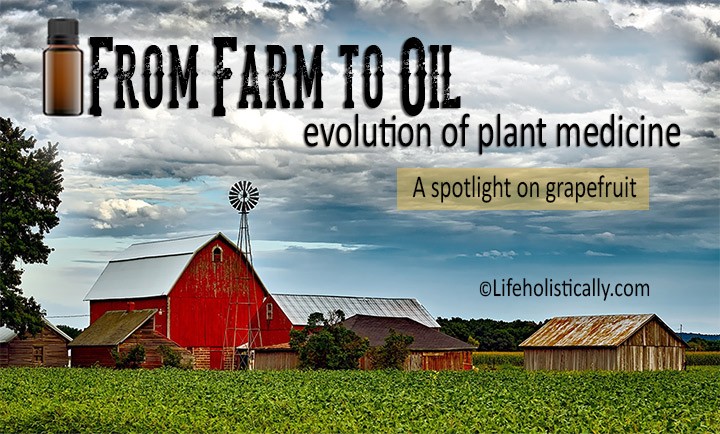
by Leslie Moldenauer | | Essential Oils
The essential oils that we know and love are derived from plants, but this does not necessarily mean that the therapeutic benefits or uses from the plant to essential oil are the same. In many cases, this does not hold true. There are many recipes online utilizing essential oils that do not honor chemistry and do not focus on safe use. Essential oil sustainability is also a massive concern as more and more people are stepping into the essential oil community every day. It is not necessary to use oils every day, or in everything. When we see a recipe shared online, we must ask ourselves if it is necessary, shifting the way we currently see these beautiful resources. Today my focus is on grapefruit essential oil: From Farm to Oil: Evolution of Plant Medicine-A Spotlight on Grapefruit
My goal in this series of blogs is to celebrate plants in all of their glory. I will walk you through from farm to oil. Uses, limitations, and fun recipes of each botanical will be covered. Within each article I will discuss the herb, flower, fruit, seed, root, or bark, and finally, the oil. This will be informative and most importantly, FUN!
Today is all about Grapefruit. I will be covering the fruit and its uses, as well as the essential oil, as there are some differences.
Grapefruit (Citrus paradisi)
Grapefruit (Citrus paradisi) essential oil is derived from the rind of the fruit. Unlike lemons that are heavily sprayed with pesticides, grapefruit is not; therefore buying the essential oil in its organic form is not necessary.
It is assumed that taking grapefruit essential oil internally in water will 1-detoxify you/cleanse the body, 2-help you to lose weight, 3-uplift mood.
Let’s pull that apart.…
1-Do essential oils cleanse the body or detoxify you?
A topic that is so incredibly misunderstood is essential oils and detoxification. Do essential oils detoxify you, or specifically your liver? I wish I could see how many mouths are going to drop right now when I say technically some of them can but it is very much not in the way that is talked about in social media or even with certain health gurus that have taken to share all about essential oils. There is A LOT of MISINFORMATION. I want to rephrase ‘detoxification’ and say that essential oils can offer our liver support.
*Remember, essential oils DO in fact contain chemicals much like drugs and pharmaceuticals contain chemicals. Even though oils are derived from plants, once distilled they are not really all natural any longer. Not in the way that we can place them on our skin undiluted or just drop in our mouth without risk.
So when I said a moment ago that essential oils do have the potential to support your liver and provide some sort of detoxification, it is really not what you’re thinking.
Placing essential oils in water is not the ideal way for a few reasons. The first is the risk involved. Since oils are so concentrated and strong..if we do not put them in a carrier oil or a capsule, we put the lining of our digestive tract at risk for irritation, potentially severe. When taking essential oils in water is it reaching the intended target? OR…more than likely is much of it being destroyed by the acidity in your stomach and then pushed through Phase I and Phase II detoxification? Dropping essential oils in your water to drink is frankly a total waste of your oils.
There are very specific oils that have therapeutic qualities called chologogues. Grapefruit is a chologogue.
What are chologogues, and what can they do for us? Chologogues promote the flow of bile [1]. This is a good thing because bile is necessary for the breakdown of fat. If we are utilizing something to help the flow of bile, we are essentially giving support to our liver…..and by removing fats from the body…we can technically in a round a bout way call it detoxification…this is just not the detoxification we first think of, right?
*Anyone that has liver disease or is currently suffering from gallstones or even has blocked or stopped bile flow, which is called cholestasis, should use caution with these oils [2].
Just remember, the method of use is important. Inhalation or PROPER internal use would be much more effective than in a glass of water. But….the fruit is better than the oil here, hands down! Eat more grapefruit.
**Note….the contraindications to the fruit and the essential oil are different. More on this in a moment.
2-Inhaling grapefruit essential oil can aid in weight loss.
This fact has been extrapolated, a bit. It is recommended in water to achieve this, but we should look to manage cravings due to its sweet scent (this can be construed as helping to not “gain weight” or to help initiate weight loss [3]. So, in order to manage cravings, place grapefruit essential oil in an inhaler and use when you have cravings. This can initiate weight gain by helping you not overeat. This is not achieved by placing drops of oil in your water.
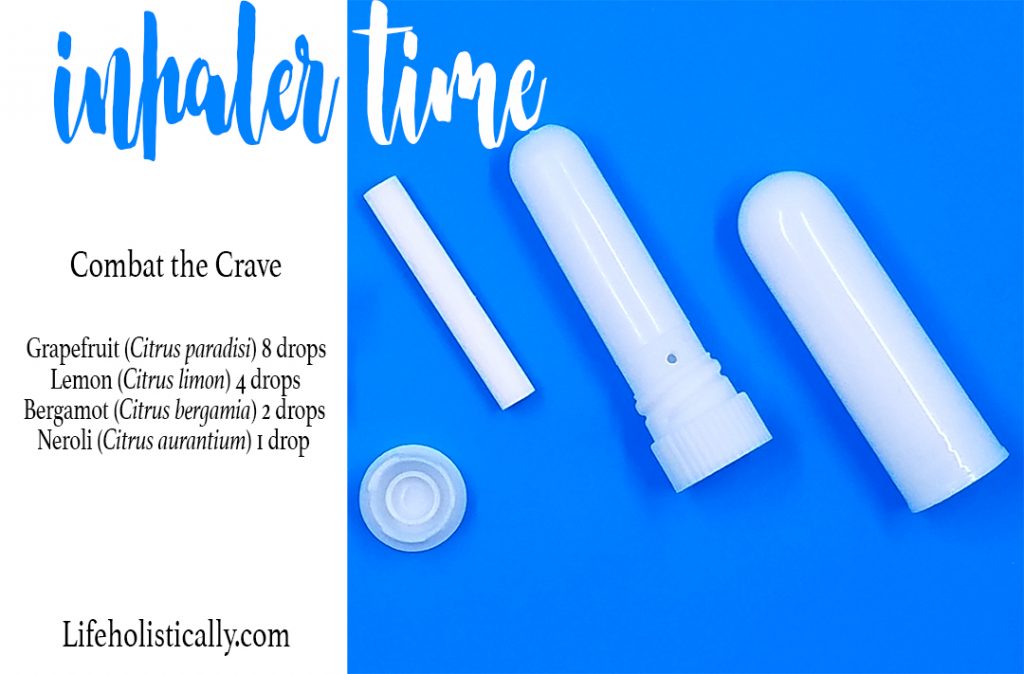
The fruit, however, can initiate weight loss by eating it! Grapefruit is full of nutrients such as vitamin A, C, potassium, lycopene, etc. It is easy to see that grapefruit has a stellar nutrient profile. Perhaps the most impressive is that even though it contains plenty of natural sugar, it is extremely low in the glycemic index (GI) so it does not affect blood sugar levels. Many studies suggest that it decreases the risk of heart disease and diabetes, and has been proven to help you to lose weight [4].
Can you begin to see the complexity of misinformation out there?
3-Inhaling grapefruit essential oil can uplift mood.
This is absolutely true!!! Ding Ding.
A study published in 2002 by the Japanese Journal of Pharmacology showed that inhaling the scent of grapefruit was uplifting to mood [5]. Yet, another fantastic reason to get this oil in an inhaler or diffuser.
Grapefruit has a number of contraindications with various drugs. Learn more about that here.
The essential oil is not the same. According to Robert Tisserand, Grapefruit is slightly phototoxic (max dermal level 4%), but does NOT have the same drug interactions as the fruit.
For more details on grapefruit, refer to Tisserand’s, Essential Oil Safety 2e.
Closing
When we take from the earth for nutrition, sustenance, and healing, it is important that we always consider not only the impact of our use but on giving back. In an ideal world, if we all gave back a little bit more than we take, the impact would be massive. As you can see here with grapefruit, the uses and cautions from fruit to oil are very different.

Like so many practices in life, I encourage you to become educated on the proper use of essential oils. When using them, please do so cautiously, understanding that there is often misinformation on the internet. You can be assured that I support only educated and proven resources. While essential oils should not be feared they should be respected and used properly to ensure the safety of the individuals using them.
Please note that I am not a medical practitioner. The content of this website is provided for general informational purposes only and is not intended as, nor should it be considered a substitute for, professional medical advice. Do not use the information on this website for diagnosing or treating any medical or health condition. If you have or suspect you have a medical problem, promptly contact your professional healthcare provider. By using this website, you assume full responsibility and liability for your own actions.
References
[1] Chologogue definition Retrieved from https://thenaturopathicherbalist.com/herbal-actions/b-d/cholagogue/
[2] Chologogue collection Retrieved from https://iliveok.com/health/cholagogue-collection_89768i15828.html
[3] Shen, J. et.al (2005) Olfactory stimulation with scent of grapefruit oil affects autonomic
nerves, lipolysis and appetite in rats.Science Direct. 289–294
[4] Hawrelak, J., Myers P. Grapefruit Causes Weight Loss. Journal of Complementary Medicine. Vol. 6, No. 1, Jan/Feb 2007: 76-77
[5] Haze, S. et al (2002) Effects of fragrance inhalation on sympathetic activity in normal adults. The Japanese journal of pharmacology. https://www.jstage.jst.go.jp/article/jjp/90/3/90_3_247/_article/-char/ja/
BEFORE YOU GO! Remember to sign up for my FREE Facebook group! Hang out with me and THOUSANDS of other Essential Oil lovers looking to learn, click on to join Real Essential Oil Education Group!
Check out my FREE offer below!
The Differences Between Essential Oil Cautions and Contraindications
Differences Between Plants and Their Essential Oil
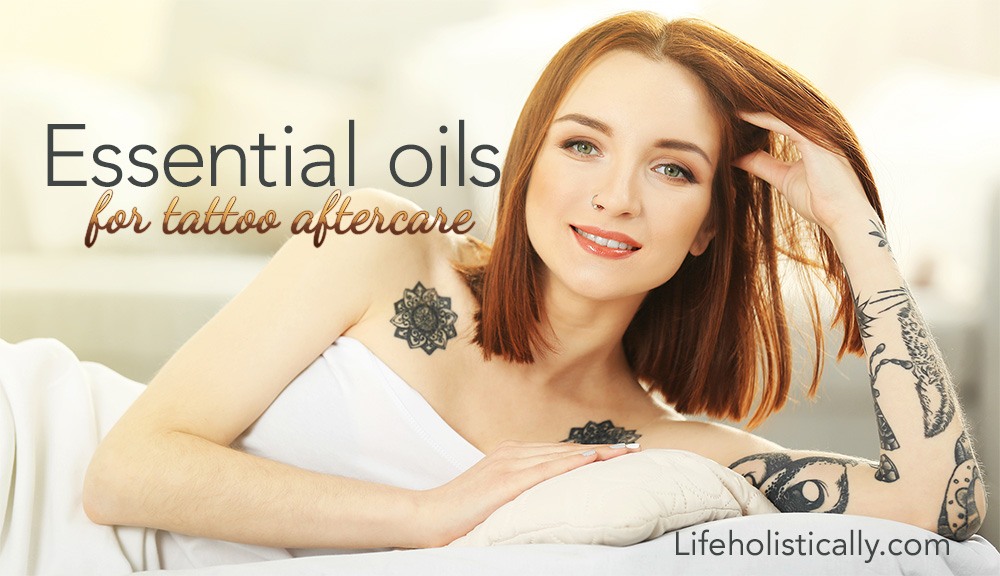
by Leslie Moldenauer | | Essential Oils
The tradition of tattoos has been around for thousands of years, and in the last couple of decades has really been accepted as mainstream. A Harris poll in 2012 found that 1 out of every 5 adults (21%) has at least one tattoo, and those numbers are significantly higher today [1]. Tattoos are a form of self-expression, enabling the body to become a canvas of sorts, a work of art.
Tattoo aftercare is important to avoid possible infection. Although it is rare, it does happen, oftentimes from improper aftercare or issues with the ink itself. One should not simply grab a lotion off the store shelf, or utilize a petroleum-based product.
After an individual gets a tattoo, they are sent home with aftercare instructions that include making sure the tattoo has room to breathe, keeping the area clean and moisturized at all times, using only the product that the artist recommends, avoid sun and chlorine and various other pieces of important instructions.
Unfortunately, over the years, individuals have used said petroleum-based products, which can trap dirt and germs and can be the exact cause of the infection that new tattoo owners are trying to avoid.
Can we utilize herbal and essential oil concoctions to not only heal a tattoo faster but also help to retain color vibrancy and skin integrity? Quality information regarding utilizing botanically based products as a part of skin care after a tattoo is not talked about often, therefore I thought it was very important to reach out to others in the community to find out its history. Professional experience speaks volumes to its safety and effectiveness.
I was honored to find two brilliant practitioners with years of the exact experience we need to have a clear picture. They are both very excited to share with all of us their findings.
For those that are not familiar with you or your work, can you introduce yourself and tell everyone a little bit about what you do?
Hello! I am Vivienne Campbell and am an herbalist. I’ve worked here in Ireland since I qualified 15 years ago. I run a clinic, teach herbal medicine, wild food foraging, and natural cosmetic-making. I also teach these world-wide via my online video course. Over the years I’ve formulated and produced professional natural skin care products for retail for myself and other brands. I also work very closely with clinical aromatherapists. I gave a lecture at the first ever Botanica conference back in 2012 and have been involved with them ever since. I have also interviewed with the producers of the upcoming aromatherapy documentary. They filmed one of my herb walks and interviewed me about herbs, essential oils and sustainability issues (I’m passionate about organics and sustainability issues, having taught classes at an organic seed bank since 2004). There’s heaps of info on my website, The Herbal Hub.
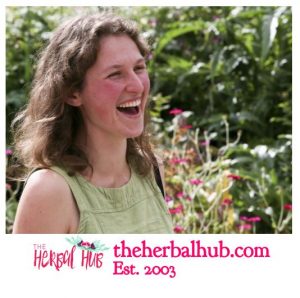
My name is Gillian Parkinson, I live in Roxburgh, Central Otago, New Zealand. My love for essential oils began about 25 years ago, in 2009 I decided to make it official and began my official studies with AromaFlex, studying Cert. Aromascience, this was a 770+ course which I absolutely loved. I graduated end of 2010.
My company Le’Esscience was born, I have a private practice where I provide a massage service, consultation & blending essential oil products. I also have 2 online stores where I make products and ship them worldwide.
I have a few stand out products (all developed by me, I have huge ethics and will not copy anyone’s recipes), to name three, Puppps Relief (a blend that assists in relieving symptoms for a distressing pregnancy rash), MendBlend, first aid blend and TINKture Tattoo Aftercare.

I wanted to talk a little bit today about utilizing essential oils topically for tattoo aftercare. There is not much by way of research or documentation regarding using essential oils in this manner. What is your experience here?
V.C.-Like some of the best things in life, I got into treating this by accident! I don’t have any tattoos but one of my patients was really into them and back in 2004 he asked me to try to make an aftercare product. I met his tattoo artist and he showed me what they used and asked me to try to make something similar. He was buying a natural ointment from the USA, but back then not much was known about tattoo aftercare and most tattoo artists were telling their clients to apply Preparation H, a hemorrhoid cream! I explained to them that this would be more likely to slow down healing rather than help it to happen.
I made a gentle natural ointment using carrier oils and herbal infused oils that traditionally help the skin to heal and prevent scarring. I also included some essential oils to add antiseptic properties to try to prevent infection and to give the product an appealing fragrance. I used rosemary, lavender, frankincense, and sandalwood (it just goes to show how long ago this was: it was before I learned about the sustainability issues of using sandalwood oil).
G.P.- I have around 8 years’ experience in this particular field now, being heavily tattooed myself, I’ve worked in the industry since I developed TINKture.
I decided to develop a tattoo aftercare product to use personally due to the lack of a product that actually aided and sped the healing process, I bruise like a plum and swell so I wanted something to help with that as well so I made my own back in 2010. My tattoo artist was so impressed he said I had to do something with it, so I requested around 20 testers, feedback was incredible, and there were no negative reactions so 6 months later I put it to market. TINKture has a real point of difference due to the fact it actually aids and speeds the healing process, it doesn’t just soothe the area, it has analgesic, anti-inflammatory, antiseptic properties and assist with the itchy stage too.
I can also help (along with antihistamine support) when someone has an allergic reaction to ink, I have experienced this and it is unpleasant and can be very painful. I have great hints and tips to get through this stage, still using TINKture as well as antihistamines and covering and washing for 7-10 days.
I have sold thousands of bottles now, and the feedback has been incredible.
Some individuals are really unsure if this is a safe practice. Why are you confident in employing them in this manner? Have you ever received any negative feedback?
V.C-Well firstly, I was asked by the tattoo artists to do this. It was their idea, not mine so I wasn’t going into it blindly. The confidence came from their feedback. The artists loved the product because they found that it preserved the colours and lines of their artwork much better than other products or no aftercare at all. If the skin doesn’t heal properly then this impacts on the artwork so well-healed skin=a better-looking tattoo and that is better for the tattoo artist (the artists I worked with won several awards). Over the years that I made this for them (6 years), I made thousands of jars of this ointment. Yes, some people had reactions to it but that is to be expected when you are dealing with numbers this high. Occasionally someone would be allergic to one of the ingredients. The recommendation would be to wash it off immediately and go back to their tattoo artist for alternative care advice. The tattoo artists were very helpful in these situations: some of their customers were allergic to the ink too! It just has to be dealt with sensibly.
When it comes to applying aftercare, less is more. A thin layer of ointment applied regularly is the thing that we found worked best for skin healing, rather than slathering on a huge amount and stopping the skin from being able to breathe. The tattoo has to be gently washed before each application of ointment. If people don’t do this then they can trap germs, it gets infected and ultimately this is more work for the tattoo artist because the tattoo gets damaged when the skin doesn’t heal properly and they need to spend additional time doing repair work on the tattoo.
The tattoo artists loved this product because when people used it their work looked better, the colours were brighter, the tattoos lasted in peak condition for longer and it reduced the number of time (unpaid hours) that they had to spend fixing work that had been damaged by insufficient aftercare treatment.
G.P.- It is safe if it is made correctly, using essential oils suitable for wound healing, don’t have contraindications (pregnancy, health conditions etc) the correct dilution, the appropriate carrier oils, directions are followed and storage and shelf life is respected.
I haven’t had ‘negative’ feedback per say, I have had people confuse reactions to allergies to ink, I’m so schooled on this subject and can tell the difference. I help any customer by asking them to send me photos of what’s happening, usually, once I see the photo, I can tell what’s going on. Inks have improved over the years, but there are still artists that ‘cut their own ink’ and use things like liquid soap, mouthwash, witch hazel, propylene glycol to cut ink, also some inks have metals in them, so mostly, it’s these ingredients that people react to. TINKture can help with settling the symptoms.
I can honestly say, I have never been told of an actual allergic reaction, it is rare if someone isn’t already sensitized to essential oils (due to incorrect or overuse) and the product has been blended correctly.
Below is a review from one of my stockiest – I didn’t request this, he just wrote it unprompted
“As a tattoo studio owner and after tattooing for over 10 years now I can honestly say this is the best product I have come across for healing tattoos. I have tried many over the years with varying results and my wife and I agree, this is the product we will be stocking and recommending to our clients. We have used it and stocked it for some time now. We were so impressed with both the product and the lovely people behind it that my wife wanted to model for the promo. So she did. That’s my beautiful wife in the poster. That’s how much we believe in the product. Check it out for yourself.”
Lampin
Lampin Ink
I assume this is not a one size fits all situation. Is there anything that you want to include on the topic? Are there specific oils that we should stay away from? What would you like everyone reading this to know regarding essential oils and tattoo aftercare?
V.C-Absolutely. No ingredient (natural or synthetic) suits everyone in the world and there will always be someone who will react to something, no matter how gentle the ingredients. Don’t panic if this happens, just wash it off and don’t use a product containing that ingredient again.
*Make something gentle. It’s not a disease or a massive infection that you are trying to treat.
*Use a very low percentage of essential oils: this product doesn’t need to be strong.
*Use fixed and herbal infused oils that are gentle.
*Avoid calendula infused oil: I know it’s recommended for skin healing but it seems to irritate and aggravate skin conditions in about 1 in ten people from what I’ve seen. It can heat up a wound and worsen it. A tattoo artist from the Netherlands that I worked with found this too and used to avoid natural aftercare products containing this oil.
*Legal work for retailing this product: depending on which country you are in, you may need to do some lab work to get it tested and approved as a retail cosmetic product. This is certainly the case now in EU countries. However, don’t worry about this. Products made from oils, butter and waxes (i.e. water-free products) are straightforward and relatively inexpensive to get tested and assessed by a cosmetic chemist. Depending on which country you are in and the rules there, you’ll need this work done so that you are insured for making this as a legal retail product. If you simply want to make some for some clients who attend your aromatherapy clinic then you shouldn’t need to do this because it should be covered like any other treatment you do there.
Thanks for asking me to talk about this. I made this product for tattoo artists in Ireland for years until the recession here got very bad and some of the studios started to close down. It was a beautiful product to make (it smelled fantastic!), I had great fun doing all the graphic design work for it, taking photos of the tattoos and collecting testimonials. I think you’ve given me the nudge I needed to start making it again so watch this space!
G.P.- I think THE most important factor is to find out if the essential oil aftercare (well any aftercare actually) you are using (which doesn’t come from a large manufacturer ie nappy rash creams, which I don’t recommend using) has been developed and made by someone with professional qualifications in that field, this is VITAL as unqualified people will not understand adverse reactions, contraindications :ie using beeswax or sweet almond oils, useless & potentially dangerous for anyone with bee or nut allergies, essential oil safety, the actual active properties of the ingredients, if it’s safe if it gets in the wrong hands (a child, pregnant woman etc). This includes people who just google, hobbyists, tattoo artists even, resellers of products that may be suitable to use but have no official experience in blending or understand the process of wound healing. If you are unsure, ask questions – the qualified practitioner will not hesitate in reassuring you.
I would never use peppermint, tea tree, rosemary specifically but importantly, essential oils that are not suitable for wound healing – and nothing more than 2-3% dilution.
It truly also helps, if the person making the products, yes, has the qualifications, but is also tattooed, in many places! – I have learned SO much about how different areas heal differently, healing tattoos in the summer is different from healing tattoos in the winter, certain fabrics irritate healing ink, the weather, your health too, if you are sick, you should not get tattooed, if you do, expect it to take longer to heal, if you have a health condition, such as fibromyalgia, expect your ink to take longer to heal – I developed TINKture with all these variables in mind, making it a safe, reliable and extremely effective natural (& vegan) product to aid & speed the healing process.
It all counts!
I would like to thank Vivienne and Gillian for sharing their expertise with us. Understanding the years of training and wisdom that are behind formulating essential oils for tattoo aftercare helps us tremendously.
There is an inherent risk of applying a product not recommended by a professional versed in skin care formulating. Both of these amazing professionals make a product very specific to the tattooed skin based on a lot of education and experience. I would discourage a home user from attempting to blindly blend something for their own use or seeking advice from a Pinterest image. Please seek advice from someone with significant knowledge on the subject.

Reference
[1] http://www.pewsocialtrends.org/2010/02/24/millennials-confident-connected-open-to-change/
BEFORE YOU GO! Remember to sign up for my FREE Facebook group! Hang out with me and THOUSANDS of other Essential Oil lovers looking to learn, click on to join Real Essential Oil Education Group!
Check out my FREE offer below!
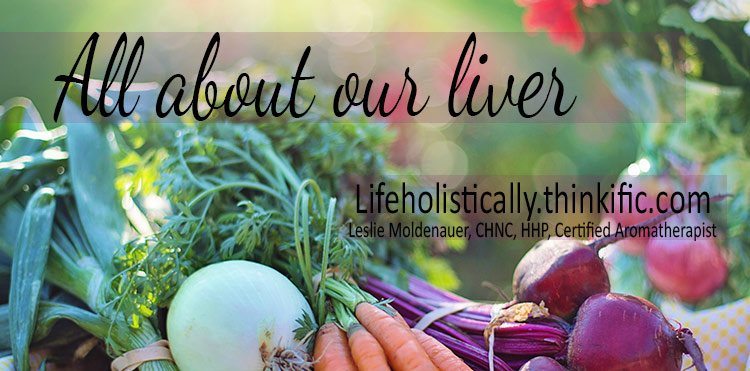
by Leslie Moldenauer | | Essential Oils
Do you feel overwhelmed when you hear how toxic our environment and therefore our bodies are, and hearing the latest buzzword of detox everywhere you turn, leaves you concerned and confused on the best possible plan of action if any? Determining Liver Health…
Over the last decade I’ve have trained and studied this very topic; and through a deep understanding of the detoxification systems of our body, I am excited to share all that I have learned.
While it is true that supporting our body in detoxification is important, the method of which to do so is oftentimes very misunderstood.
What you put in your body, and on your body is one determining factor of your overall health. Discover what nourishes you and your liver, and by making a few simple changes, learn how you can shift not only how you feel, but the function of your liver and much more!
I have taken all of my experience of more than a decade and placed them into a 3-part training series. The first is all about our liver, the second is the gut, and the third covers the biggest culprit of being unwell whether mentally, emotionally, or physically, which is stress.
Why did I choose these three together? They very much go hand in hand, like an intricate woven web. Each organ and system speak to each other, they help the other to function, in order for you to achieve optimal health.
Why this Training?
So, let’s briefly go over how the liver training will provide you with the insights, strategies, and tools for you to be well on your way to where you want to be:
*I provide plenty of easy to follow herbal recipes for optimal function of the liver, taking the guesswork out of the equation.
*Uncover the livers’ true role in detoxification, and what we can do in order to get it functioning like a well-oiled machine. Discover the food, nutrients, herbs, and mindset that will assist you with this.
*Do essential oils help to detoxify our liver? We will examine the real facts, and look at the research.
*Learn how the liver is tied to the health of almost every aspect of our body, and how we can easily have it singing our praises.
As a Mom who has made these changes, and works to keep my boys as healthy as I can, I speak your language. The change that comes about because you have a strong detoxification system is truly palpable.
Achieving this is easy, especially with the expertise I have to share with you, the knowledge both as a trained holistic health practitioner…. and as a Mom! I am incredibly passionate about helping all moms to embrace their health and mindset so that all cups are full to care for others. I want to help you to rock this beautiful life!
We are in this together. Let’s make self-care our health-care.
Click the link below to get started. There is a special launch rate for those in my group, Real Essential Oil Education until August 11th…be sure to check out the pinned post in the group for details!
Lifeholistically classroom on Thinkific!

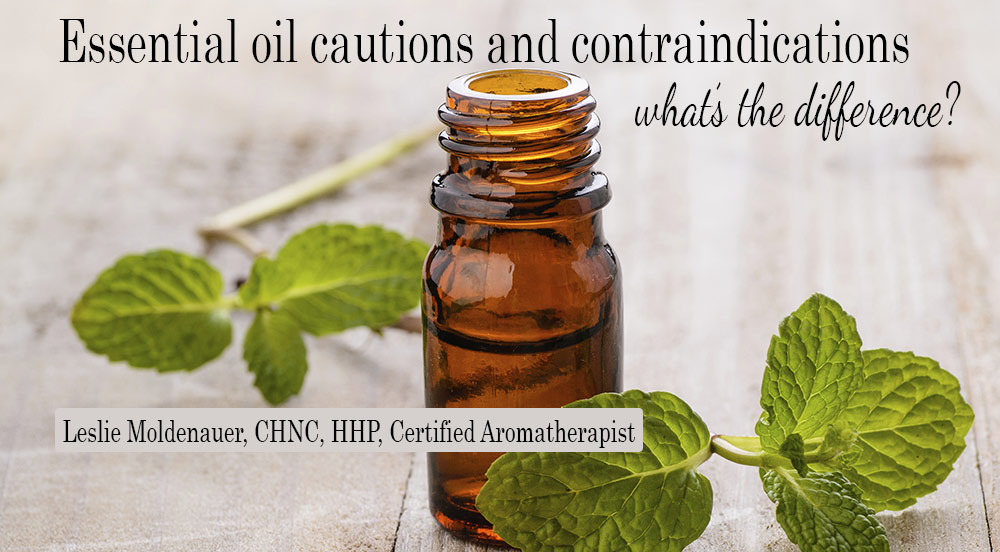
by Leslie Moldenauer | | Essential Oils
Essential Oil Safety-Cautions and Contraindications. This post is in response to a need/request from a poll in my Facebook group “Real Essential Oil Education Group”. The members asked for clarification about the differences between essential oil cautions and contraindications.
I had received an email back in April of 2017, asking me to state what I thought a caution and a contraindication meant in the aroma world.
He wanted to know what I thought the differences were. I am not sure if he thought I did not know (chuckle) or if he wanted to be sure I did. Those two things may seem similar, but I assure you at the moment they were very different considering the nature of the inquiry. This was my exact response, copy and paste from my response to him:
“Of course, happy to share my thoughts….
A contraindication is a situation, which makes a particular essential oil absolutely inadvisable. Of course, we know in “most”, but not all cases these contraindications are indicated via the oral pathway.
A caution or precaution is relating to an action taken to protect against possible harm/adverse effect if you will, in this case, avoid dermally under age two. In my practice, these would be more of a case-by-case basis, as sometimes the benefit does outweigh the risk. But this is not something I teach or share online for obvious reasons.
I would hope this is how most in the field understand it, but I am being generous. A quick Google search (my favorite) shows these two terms more often than not are interchangeable”.
This is the beginning of the issue I am afraid. Good Ol’ Dr. Google. A pervasive problem in so many areas, I actually wrote a blog specifically on that topic. But I digress.
When looking up the differences between a caution and a contraindication, even Google seems rather confused (said jokingly), people are confused. So, I thought I would go over it just a bit for you today.
These two terms should not be used interchangeably when it comes to essential oils just as much as herbs or pharmaceuticals.
*All examples below are from the book, Essential Oil Safety 2e written by Robert Tisserand and Rodney Young. (Get your copy here). None of the cautions or contraindications listed within is my own finding. My goal to close the gap on the many misunderstandings.
The book states that cautions are:
“potential hazards that do not warrant contraindications, either because the evidence is flimsy of because the hazard is not especially worrying”[1].
Cautions
Hypersensitive skin
Under age 2
Old/Oxidized oils should be avoided
(oral) Drugs metabolized by a particular cytochrome P450 pathway
(oral) Pregnancy
(oral) Specific medication
(oral) Peptic ulcer
(oral) GERD
(oral) Major surgery
This is not an all-inclusive list, but there are a few things to point out.
If this is a listed caution, it is ‘possible’ that there could be an issue when used in this manner.
- For example, you could utilize an essential oil that is listed as a caution under the age of 2, like lemongrass (Cymbopogon flexuosus), for example. Is it off limits? No. Should we be educated and know the risk, and work to minimize risk? Absolutely.
- Another example would be (oral) GERD, as is the case with Peppermint (Mentha piperita) essential oil. Can you take peppermint in this manner? You can. Is there an increased likelihood to have gastroesophageal irritation and heartburn from it? There is. But, if taken responsibly, such as in an enteric coated capsule over something not recommended like dropping peppermint essential oil in water and drinking it, will go a long way in reducing the risk from said caution.
- Old/oxidized oils should be avoided. It can be challenging to determine if an essential oil has oxidized. If you apply an oxidized essential oil properly diluted to the skin, you ‘may’ have a reaction…and you may not. This is not a statement to encourage you to do this, it is just stating that it should be avoided if at all possible to eliminate the risk from said caution.If we can eliminate risk, we should right? But, reality check…..in aromatherapy, there is a risk. Some small, some not so small….and it is an aromatherapists job to first and foremost be able to analyze any risk…and look for ways to lower it. Eliminating it all together is in many cases not possible. Now let’s look at contraindications.
The book further states that contraindications are:
“When the oil should be avoided. The method of administration is also stated. Oral contraindications apply to the oral of administration of essential oils as used in aromatic medicine. Oral contraindications do not apply to the use of essential oils and any other context, such as in foods, fragrances, personal care products or by inhalation” [2].
Contraindications
(all routes) Do not apply on or near the face of infants or children
(all routes) Anticoagulant medication
(all routes) Pregnancy
(all routes) Children
(all routes) Estrogen-dependent cancers
(oral) Cholestasis
- The first example here with contraindications is a popular one, and that is an essential oil high in 1,8 cineole should be avoided (is contraindicated) on or near the face of infants and children. This does not mean no, never, it means never near the face. Responsible diffusion may be perfectly ok.
- Pregnancy contraindications, when listed as (all routes). The benefit does not outweigh the risk, it should be avoided for all routes of application: topical, inhalation, or oral, period.
A couple of important points to remember:
*If a contraindication states (oral) in the book, this does not mean that the oil needs to be avoided topically or via inhalation.
*Remember, cautions are a ‘potential chance’ of an issue. There are many essential oils that are cautioned under the age of 2 dermally/topically. This does not then mean it cannot be inhaled.
Some may see this information as cut and dry, while others still need further clarification. There is nothing wrong with being overly cautious, and many professionals are. We all come to the table with varying levels of experience so this is expected.
If I ever find myself in a position where I am taking a caution a step further than Tisserands recommends I typically say “The research states X, but in your situation, I am not comfortable making that recommendation because of Y”. I try to always stay true to what we do know, not make my own rules, but I am willing to step outside of the box when my education and experience tells me the situation warrants it.
I am a stickler about using the verbiage above in order to not cause confusion on what we do know about cautions, contraindication, and hazards….and explain things as thoroughly as I can.
I hope that this helps to clear up any possible confusion that a ‘caution’ often brings up. If you need further clarification, I invite you to reach out to me in the group (request to join), or simply email me at Lifeholistically@gmail.com
References
[1] [2] Tisserand, R., Young, R., & Williamson, E. M. (2014). Essential oil safety: A guide for health care professionals. Edinburgh: Churchill Livingstone/Elsevier.
Like so many practices in life, I encourage you to become educated on the proper use of essential oils. When using them, please do so cautiously, understanding that there is often misinformation on the internet. You can be assured that I support only educated and proven resources. While essential oils should not be feared they should be respected and used properly to ensure the safety of the individuals using them.
Please note that I am not a medical practitioner. The content of this website is provided for general informational purposes only and is not intended as, nor should it be considered a substitute for, professional medical advice. Do not use the information on this website for diagnosing or treating any medical or health condition. If you have or suspect you have a medical problem, promptly contact your professional healthcare provider. By using this website, you assume full responsibility and liability for your own actions.
What is an Adverse Reaction to an Essential Oil?
Find Your Footing Using Natural Remedies
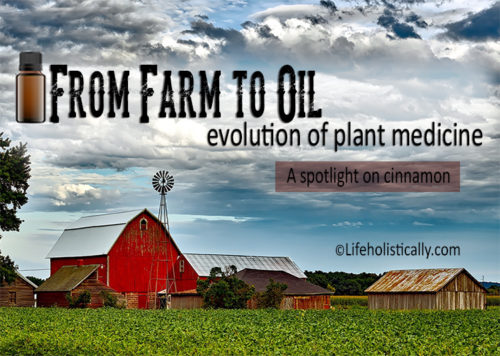
by Leslie Moldenauer | | Essential Oils
The essential oils that we know and love are derived from plants, but this does not necessarily mean that the therapeutic benefits or uses from the plant to essential oil are the same. In many cases, this does not hold true. There are many recipes online utilizing essential oils that do not honor chemistry, and do not focus on safe use. Essential oil sustainability is also a massive concern as more and more people are stepping into the essential oil community every day. It is not necessary to use oils every day, or in everything. When we see a recipe shared online, we must ask ourselves if it is necessary, shifting the way we currently see these beautiful resources. Today my focus is on cinnamon essential oil: From Farm to Oil:Evolution of Plant Medicine-A Spotlight on Cinnamon
My goal in this series of blogs is to celebrate plants in all of their glory. I will walk you through from farm to oil. Uses, limitations, and fun recipes of each botanical will be covered. Within each article I will discuss the herb, flower, fruit, seed, root, or bark, and finally, the oil. This will be informative and most importantly, FUN!
Today is all about Cinnamon. I will be covering the spice and in regards to the essential oil, will be looking at both Cinnamon bark (Cinnamomum zeylanicum) and Cinnamon leaf (Cinnamomum verum), the botanical names are sometimes used interchangeably, but the chemistry, cautions, and contraindications are different.
Cinnamon
Cinnamon is a spice that comes from the branches and bark of wild trees that belong to the genus “Cinnamomum”.
Cinnamon might not be the first spice that we reach for when cooking a meal, but it is definitely not due to a lack of health benefits.
There are two main types of cinnamon [1]. Ceylon cinnamon is the first, and is sometimes called “true” cinnamon. The other is Cassia cinnamon. Cassia is the more common variety today, and contains more Coumarin than the Ceylon variety. Coumarin is a very important constituent that I will be covering in more detail when I dig into the essential oils.
**Side note, there is overly processed cinnamon spice on the market that lacks therapeutic value, so be sure that you buy yours from a reputable supplier. Contrary to what you have read online, there is not a truly ‘fake’ cinnamon, just inferior ones.
As with any other herb that you purchase, the fresher it is the better. When cinnamon loses its bite, it also starts loosing its therapeutic value.
Cinnamon is rich in plant polyphenols that can help control blood sugar and insulin spikes after meals [2]. Adding a pinch to your tea before a meal is a fantastic way to find balance. Polyphenols are antioxidants that come with many benefits, and have many studies attached to them. One placebo-controlled trial found that a supplement containing cassia cinnamon, chromium and carnosine successfully lowered fasting blood sugar in people with pre-diabetes [3].
Blood sugar balance is not the only benefit that cinnamon provides us. A study published in 2003 by the journal Diabetes Care showed that cinnamon reduces patients’ triglycerides, and LDL cholesterol in patients with type 2 diabetes, lowering the risk factors associated with diabetes and cardiovascular diseases [4]. These results were measured after anywhere from 1-6 grams of the spice was taken internally for 40 days.
These are just a few examples of why consuming cinnamon spice daily may have some benefits to your overall health.
WebMD states that cinnamon is considered to be safe when consumed in the levels you would in food. Consuming in large amounts could be a concern for those with blood clotting issues or those on blood thinning medications due to the constituent Coumarin. Use caution if you have been diagnosed with low blood sugar levels (hypoglycemia), as cinnamon has been shown to have the ability to lower it further it could cause issues for you [5].
If the above cautions do not apply to you, I ask that all of you begin to think about where you can use the spice before reaching for the essential oil, as the benefits are often not the same. Here are a few ideas for you.
Cooking with Cinnamon
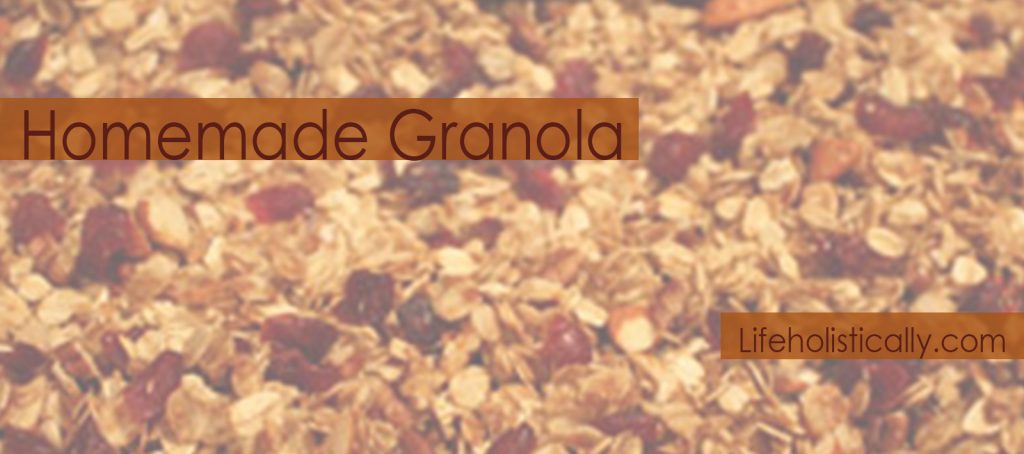
Pumpkin Cinnamon Granola
Ingredients:
Organic pumpkin puree 1/2 cup
Pure honey 1/3 cup
Pure vanilla extract 1 teaspoon
Gluten free oats 2 1/2 cups
Chia seed 1/4 cup
Pecans, Walnuts, or Almonds ½ cup crushed
Pumpkin seed 1/4 cup
Dried cranberries 1/2 cup
Himalayan pink sea salt 1 tsp
Ground cinnamon 2 tsp
Ground ginger 1/2 tsp
Ground nutmeg 1/4 tsp
Directions:
Preheat the oven to 300 degrees F. Line a baking sheet with parchment paper.
In a large bowl, mix the pumpkin puree, cinnamon, ginger, salt, and nutmeg. Stir in the honey and vanilla extract. Next, add the oats and quinoa, and stir until evenly coated. Lastly, add the crushed nuts and pumpkin seeds.
Spread the mixture evenly on the parchment paper and press down with the back of a spatula. Bake for 20 minutes, gently mix, then bake for an additional 20 minutes. Place the pan on a wire rack and let the granola cool completely on the baking sheet for a minimum of one hour. Once cool add the cranberries.
This recipe will keep in an airtight container at room temperature for 2-3 weeks. Add to your favorite yogurt, pour over almond milk, or eat plain to assist in balancing blood sugar between meals.
Morning Cinnamon Smoothie
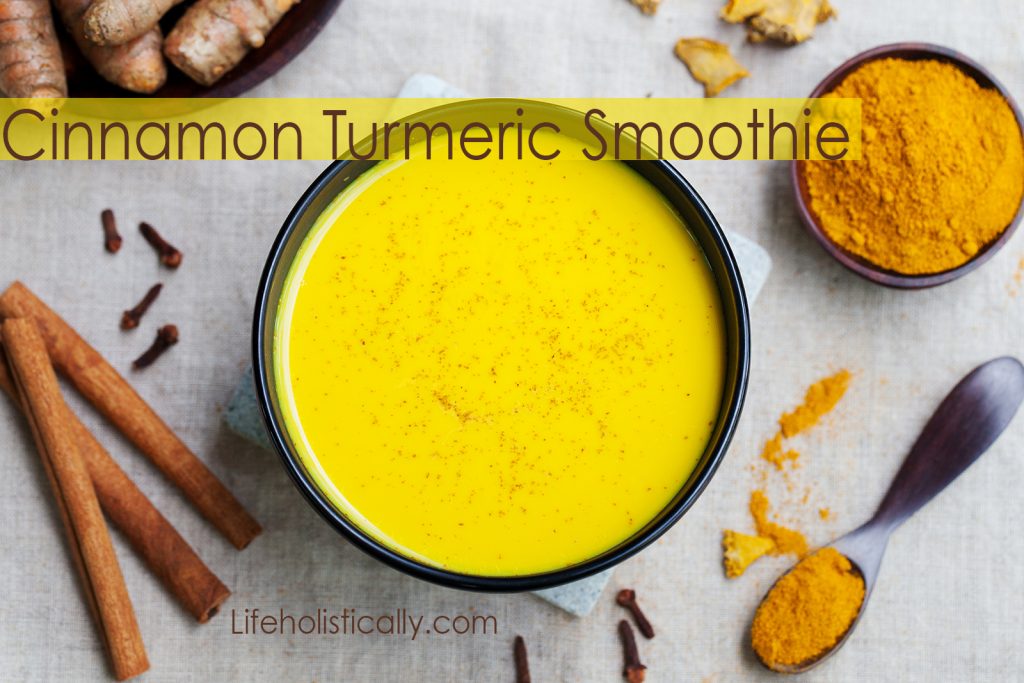
Ingredients:
Unsweetened almond milk 12 oz (can replace with coconut milk)
Half of a frozen banana
Organic pitted dates 2 chopped
Ground cinnamon 2 tsp
Ground turmeric 1 tsp
Blend well and enjoy!
Using the Spice in Body Recipes
Ground cinnamon can be quite heavenly in a body scrub; it is aromatic and helps to open the sinuses giving you a pep in your step to start off your day. I prefer the spice to the essential oil on the skin, as the oil has a much higher risk of skin irritation. More on this shortly
Cinnamon Body Scrub
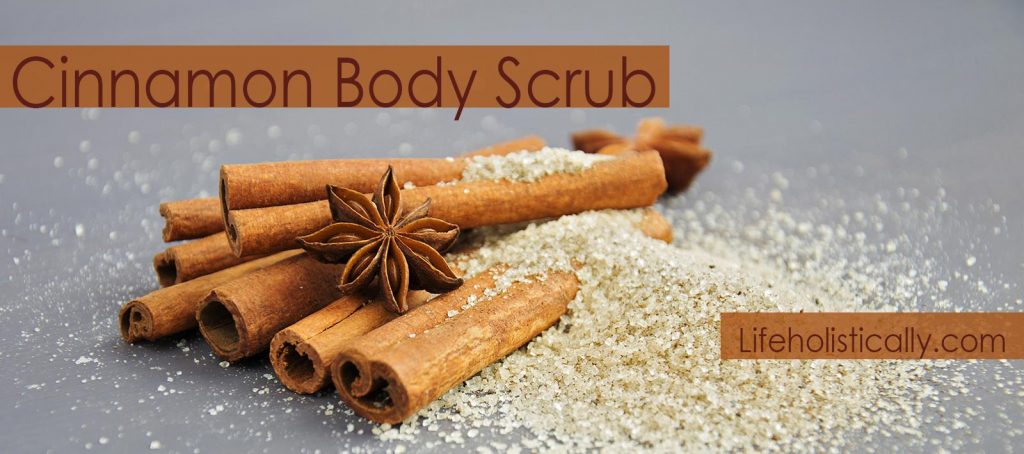 Ingredients:
Ingredients:
Brown sugar 1 cup
Coffee grounds 2 tbsp
Carrier oil of your choice 1/4 cup
Ground cinnamon 1 tsp
Ground nutmeg 1/4 tsp
Mix well and store in a glass container. Make sure you do not dip wet fingers into the container; the introduction of water into the container will encourage microbial growth.
Cinnamon Essential Oil
Cinnamon bark (Cinnamomum zeylanicum)
Cinnamon bark is a powerful aromatic oil, and contains high amounts of the constituent cinnamaldehyde. As is the case with aldehydes, cinnamon bark essential oil carries a very high risk for skin irritation, the highest of almost any essential oil in the marketplace. Robert Tisserand gives more details on the skin risk here.
Tisserand recommends not using on the skin at rates any higher than 0.1%. These numbers are very important when you look at it in a blend. This is what it would look like:
5mls carrier oil=0.1 drops cinnamon bark
50mls carrier oil=1 drop cinnamon bark
50mls is the equivalent of approximately 1.75 ounces/3.5 tbsp/10tsp
Due to this, I have great concern for those purchasing proprietary anti-germ blends containing cinnamon bark essential oil. There is no way to know if the blend is safe to use on the skin or not. Couple that with individuals recommending applying these blends neat or undiluted….it is simply playing with fire.
According to Tisserand, cinnamon bark essential oil should be avoided is pregnant or nursing, and can be risky for anyone attempting to take it orally with numerous medications, which I highly discourage.
Diffusing it even comes with precautions. You can burn the inside of the nose or irritate the lungs if you sit too close.
For these reasons, I do not use cinnamon bark in my practice or in my home.
For a detailed list of cautions and contraindications for cinnamon bark, refer to Tisserand’s, Essential Oil Safety 2e.
Cinnamon leaf (Cinnamomum verum)
Cinnamon leaf does not comes from the bark like its counterpart, but it still carries cautions. There are some professionals that consider cinnamon leaf to be a safe replacement for cinnamon bark, and it can be.
First things first, cinnamon leaf has high amounts of eugenol, which is in the family of phenols. Phenols are considered caustic, so we still need to use great care when applying to the skin. Can it be used on the skin at all? It can. Cinnamon leaf is most used in a blend for muscle tightness and discomfort. Even though there are many other essential oils that are useful for discomfort, I highly recommend using the leaf over the bark.
When looking at the figures above for cinnamon bark, that only 1 drop is recommended in 50mls of carrier oil, in comparison you can go up to 7 drops of cinnamon leaf in 50mls of carrier oil.
There are many cautions and contraindications to both cinnamon bark and cinnamon leaf essential oils. According to Tisserand, Cinnamon leaf had many of the same concerns as cinnamon bark. Are you asking why I do not utilize cinnamon leaf if I can? When looking at the range of essential oils that are available to me in my toolbox, I would rather go with essential oils that are effective without all the risk of irritation.
For more information, refer to Tisserand’s Essential Oil Safety 2e.
I have included a number of references should you want to do additional research on both cinnamon bark and cinnamon leaf. If you are currently using either in hopes of ‘staying well’, I encourage you to comb through them.
Closing
When we take from the earth for nutrition, sustenance, and healing, it is important that we always consider not only the impact of our use but on giving back. In an ideal world, if we all gave back a little bit more than we take, the impact would be massive. As you can see here with cinnamon, the essential oil carries much more risk than the spice. With so many people utilizing these essential oils, there is great concern for injury. For the continued future success of natural healing, it is important that we look at the big picture by looking at risk vs benefit. I hope you can see that here the risk is far greater.

Like so many practices in life, I encourage you to become educated on the proper use of essential oils. When using them, please do so cautiously, understanding that there is often misinformation on the internet. You can be assured that I support only educated and proven resources. While essential oils should not be feared they should be respected and used properly to ensure the safety of the individuals using them.
Please note that I am not a medical practitioner. The content of this website is provided for general informational purposes only and is not intended as, nor should it be considered a substitute for, professional medical advice. Do not use the information on this website for diagnosing or treating any medical or health condition. If you have or suspect you have a medical problem, promptly contact your professional healthcare provider. By using this website, you assume full responsibility and liability for your own actions.
References
[1] History behind cinnamon. Retrieved from https://blog.paleohacks.com/ceylon-cinnamon/
[2] Bozzetto, L. et.al. Polyphenol-rich diets improve glucose metabolism in people at high cardiometabolic risk: a controlled randomised intervention trial. Diabetologia 2015 Jul;58(7):1551-60
[3] liu, Y. et.al (2015) A Dietary Supplement Containing Cinnamon, Chromium and Carnosine Decreases Fasting Plasma Glucose and Increases Lean Mass in Overweight or Obese Pre-Diabetic Subjects: A Randomized, Placebo-Controlled Trial. PLOS One. Sep 25;10(9):e0138646
[4] Cinnamon improves glucose and lipids of people with type 2 diabetes. Retrieved from https://www.ncbi.nlm.nih.gov/pubmed/14633804
[5] Cassia cinnamon. Retrieved from https://www.webmd.com/vitamins/ai/ingredientmono-1002/cassia-cinnamon
Resources
Cinnamon bark. https://www.webmd.com/vitamins/ai/ingredientmono-330/cinnamon-bark
6 Side Effects of Too Much Cinnamon. https://www.healthline.com/nutrition/side-effects-of-cinnamon
12 Side Effects of Cinnamon. https://www.cinnamonvogue.com/cinnamon_side_effects.html
BEFORE YOU GO! Remember to sign up for my FREE Facebook group! Hang out with me and THOUSANDS of other Essential Oil lovers looking to learn, click on to join Real Essential Oil Education Group!
Check out my FREE offer below!
[et_bloom_inline optin_id=optin_3]












 Ingredients:
Ingredients:

